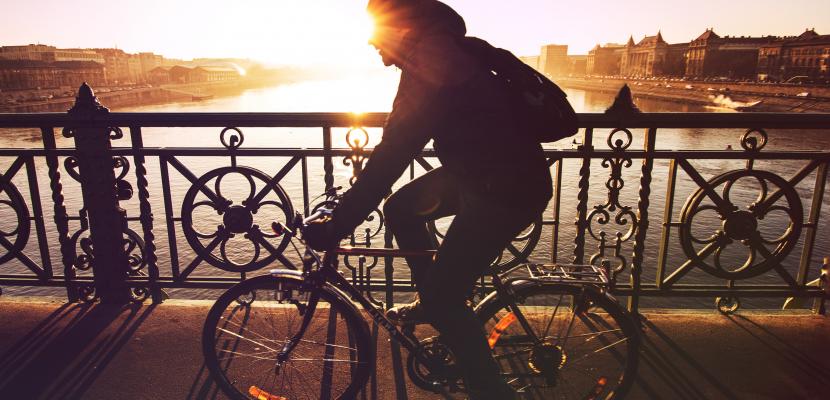Image

RESTORATION OF AN OLD PAVILION OF THE GREENWAY OF THE OLD BASQUE-NAVARRE RAILWAY
Published on 17 February 2021

Spain
País Vasco
This is the good practice's implementation level. It can be national, regional or local.
About this good practice
The Basque-Navarre Greenway links the areas of the Region by uniting its main ecotourism attractions, and in this way encourages the promotion of the social and economic development of the Alavese Mountain from a perspective that respects Nature.
The Greenway has become a path for walkers and cyclists interested in following a route through changing landscapes of great beauty. Not surprisingly, several Natural Protected Areas of the Natura 2000 Network are crossed and old stations, viaducts and tunnels. The Basque-Navarre Greenway, therefore, appears not only as a platform for recreational sports and alternative mobility activities to cars, but also as an opportunity to rescue from oblivion a cultural heritage.
In the town of Antoñana (Montaña Alavesa Region), next to the Greenway Interpretation Centre, is one of the minor jewels of the industrial heritage that accompanied this railway line. This very special piece, formerly known as the automotive pavilion, served as a workshop and warehouse for the trains cars from 1927 to 1967.
The restored pavilion will serve as a warehouse for bicycles to be rented by visitors, while the extension will provide a bar, rest and exhibition service. These actions, complementary to the WLE project, will strengthen the promotion of the socioeconomic development of the region through its natural assets, since they involve reusing an old railway infrastructure to bring walkers and cyclists to a natural environment in a respectful way.
The Greenway has become a path for walkers and cyclists interested in following a route through changing landscapes of great beauty. Not surprisingly, several Natural Protected Areas of the Natura 2000 Network are crossed and old stations, viaducts and tunnels. The Basque-Navarre Greenway, therefore, appears not only as a platform for recreational sports and alternative mobility activities to cars, but also as an opportunity to rescue from oblivion a cultural heritage.
In the town of Antoñana (Montaña Alavesa Region), next to the Greenway Interpretation Centre, is one of the minor jewels of the industrial heritage that accompanied this railway line. This very special piece, formerly known as the automotive pavilion, served as a workshop and warehouse for the trains cars from 1927 to 1967.
The restored pavilion will serve as a warehouse for bicycles to be rented by visitors, while the extension will provide a bar, rest and exhibition service. These actions, complementary to the WLE project, will strengthen the promotion of the socioeconomic development of the region through its natural assets, since they involve reusing an old railway infrastructure to bring walkers and cyclists to a natural environment in a respectful way.
Expert opinion
The strong influx of tourists tends to focus on popular cities and touristic hotspots which often suffer from the undesired side effects of mass tourism whilst the hinterland experiences reverse effects of dwindling tourist numbers and depopulation. The creation of new itineraries and valorisation of cultural heritage can draw tourist flows away from the main attractions and promote less-known destinations and regions. The Green Way presented in the good practice combines active modes of transport (cycling, walking) and the restoration of industrial heritage whilst creating opportunities to enjoy nature to locals and tourists alike. This approach can inspire other tourist destinations. More inspiration can be found in this article: https://www.interregeurope.eu/policylearning/news/11416/off-the-beaten-track-regional-strategies-boosting-tourism-through-heritage/
Works at
Interreg Europe Policy Learning Platform
Resources needed
The budget amounts to €300,000, which had to be divided into two execution phases. A first phase consists of the consolidation of the original pavilion, and the construction of the extension with a total of €200,000. In the second phase, the interior adaptation works will be undertaken with €100,000
Evidence of success
The consolidation of a disappearing industrial heritage can be considered a success in itself. This heritage, in turn, makes it possible to implement the necessary uses to support the Greenway in a territory that lacks services of these characteristics, which directly affects the approach to the natural environment and the promotion of socio-economic development.
Potential for learning or transfer
The Greenway still has a lot of heritage in a state of ruin, which can be restored to keep its history alive, and to recover a very special industrial heritage that is very relevant to the territory it runs through. The neighbouring territory of Navarre also has the opportunity to recover this heritage by providing not only continuity to the route, but also continuity in the historical reading of that time. In any case, this action further consolidates the use of the Greenway, which was once a railway, and this reuse of a linear infrastructure and its associated heritage in disuse can be extrapolated to other areas of European geography for environmentally-friendly walking and cycling.
Good practice owner
You can contact the good practice owner below for more detailed information.
Organisation
Diputación Foral de Álava - Arabako Foru Aldundia

Spain
País Vasco
Contact
Environmental assessment technician
